Sensor Sweep: Wally Wood, Sword & Sorcery, John Jakes, Red Sonja
Monday , 3, April 2023 Sensor Sweep 1 CommentSword & Sorcery (Sprague de Camp Fan): When L. Sprague de Camp first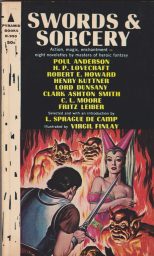 got the idea to compile a Sword and Sorcery anthology, he had trouble finding a publisher. More on this later. First a little (a very short) history is needed.
got the idea to compile a Sword and Sorcery anthology, he had trouble finding a publisher. More on this later. First a little (a very short) history is needed.
Cinema (Roger Ebert): It is by general agreement the most famous shot in silent comedy: a man in a straw hat and round horn-rim glasses, hanging from the minute hand of a clock 12 stories above the city street. Strange, that this shot occurs in a film few people have ever seen. Harold Lloyd’s “Safety Last” (1923), like all of his films, was preserved by the comedian but rarely shown.
Fiction (Vintage Pop Fictions): Valley of the Assassins from 1975 was the last of the four thrillers written by Marvin Albert under the name Ian MacAlister and published by Fawcett Gold Medal.
last of the four thrillers written by Marvin Albert under the name Ian MacAlister and published by Fawcett Gold Medal.
Marvin Albert (1924-1996) was an American who wrote both adventure and crime thrillers. Rick Larson is heading through the Persian Gulf in his cabin cruiser when he comes across three dead men on a reef. Except that one of them isn’t dead.
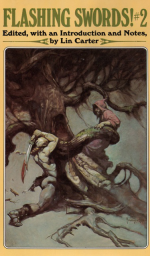 Authors (Tellers of Weird Tales): John Jakes has died. Known for his vastly popular historical novels, the late Mr. Jakes got his start as an author of science fiction and fantasy stories. His first published story was “The Dreaming Trees” in Fantastic Adventures, November 1950. According to Isaac Asimov, the Golden Age of Science Fiction ended in 1950. If that’s the measure, then John Jakes just barely slipped in before that age came to an end. John Jakes could have been in Weird Tales, but he wasn’t.
Authors (Tellers of Weird Tales): John Jakes has died. Known for his vastly popular historical novels, the late Mr. Jakes got his start as an author of science fiction and fantasy stories. His first published story was “The Dreaming Trees” in Fantastic Adventures, November 1950. According to Isaac Asimov, the Golden Age of Science Fiction ended in 1950. If that’s the measure, then John Jakes just barely slipped in before that age came to an end. John Jakes could have been in Weird Tales, but he wasn’t.
Fiction (Chimney Sweep Reader): Brak the Barbarian is John Jakes’ tribute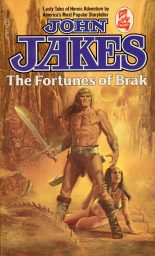 to the great Robert E. Howard and specifically to the Conan stories. Jakes wrote these stories in a similar style but perhaps a little more modernized. They are slightly more politically correct than the original Conan stories with the damsels still being in distress but not always quite so dependent on the strong male to rescue them. Evil magicians, swashbuckling sword fights, narrow escapes…you get the idea.
to the great Robert E. Howard and specifically to the Conan stories. Jakes wrote these stories in a similar style but perhaps a little more modernized. They are slightly more politically correct than the original Conan stories with the damsels still being in distress but not always quite so dependent on the strong male to rescue them. Evil magicians, swashbuckling sword fights, narrow escapes…you get the idea.
Science Fiction (Classics of Science Fiction): Ever since I had an operation last August I’ve noticed that my enthusiasm for science fiction is waning. Partly, that’s due to a loss of vitality after the operation and partly, I’m getting older and just more tired. I know this because I can measure my activity level by how well I keep up with my reading group. It reads and discusses one science fiction short story every day. I was reading and commenting on every story before my operation. Now, I can’t keep up.
Pulp (Tentaclii): Up for sale, a 1960s zine I’d not heard of, Paradox #7…Half of this issue is taken up with a bibliography of the fantasy and horror writings of David H. Keller, the [medical] doctor and Lovecraft scholar and Arkham House patron. The bibliography is extensive and is based upon the doctor’s own files, which the editor consulted on a visit to his house. fanac.org doesn’t appear to have scans, and neither does Archive.org. Comments in other zines of the time suggest Paradox was held in high regard for its content.
Fantasy (Paperback Warrior): The fiery redheaded barbarian, created by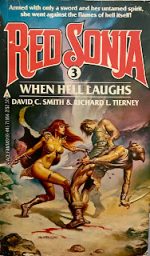 Roy Thomas Jr. and Barry Windsor Smith, first appeared in Marvel Comics’ Conan the Barbarian #23. Since then, she’s flourished as a prominent character in Conan’s Hyborian Kingdom, created by Robert E. Howard, and pop-culture. I’ve been slowly reading the Red Sonja paperback series, consisting of six original novels published by Ace between 1981-1983. Enjoying the first two installments, I was hoping the third entry, When Hell Laughs, would continue with the same quality. To my surprise, this is the best installment yet.
Roy Thomas Jr. and Barry Windsor Smith, first appeared in Marvel Comics’ Conan the Barbarian #23. Since then, she’s flourished as a prominent character in Conan’s Hyborian Kingdom, created by Robert E. Howard, and pop-culture. I’ve been slowly reading the Red Sonja paperback series, consisting of six original novels published by Ace between 1981-1983. Enjoying the first two installments, I was hoping the third entry, When Hell Laughs, would continue with the same quality. To my surprise, this is the best installment yet.
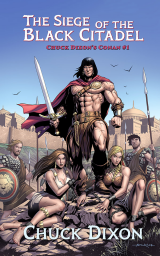 Conan (Rough Edges): THE SIEGE OF THE BLACK CITADEL is the first of what I hope will be numerous Conan novels by Dixon. As the story opens, Conan is part of a mercenary company fighting on the side of the rebels in a civil war in the country of Koth. The rebel forces have laid siege to the fortress known as the Black Citadel, which controls a river that’s vital to both sides in the war. Charged with finding a way to infiltrate the fortress, Conan accidentally discovers the secret of a great fortune hidden inside the citadel.
Conan (Rough Edges): THE SIEGE OF THE BLACK CITADEL is the first of what I hope will be numerous Conan novels by Dixon. As the story opens, Conan is part of a mercenary company fighting on the side of the rebels in a civil war in the country of Koth. The rebel forces have laid siege to the fortress known as the Black Citadel, which controls a river that’s vital to both sides in the war. Charged with finding a way to infiltrate the fortress, Conan accidentally discovers the secret of a great fortune hidden inside the citadel.
Westerns (Criterion): In the summer of 1956, when a taut, swift little B western called Seven Men from Now snuck into American movie houses, the long-lived film genre had begun to show its age, and its most popular stars were looking none too spry themselves. Gary Cooper, Henry Fonda, and Joel McCrea were all in their fifties; James Stewart and John Wayne were closing fast. For the next few years, a good deal of creative lighting, makeup, costuming, and especially coiffing would be necessary to sustain the illusion that these middle-aged gents were—as the genre seemed to require—lithe, virile, even dangerous hombres in the prime of life.
western called Seven Men from Now snuck into American movie houses, the long-lived film genre had begun to show its age, and its most popular stars were looking none too spry themselves. Gary Cooper, Henry Fonda, and Joel McCrea were all in their fifties; James Stewart and John Wayne were closing fast. For the next few years, a good deal of creative lighting, makeup, costuming, and especially coiffing would be necessary to sustain the illusion that these middle-aged gents were—as the genre seemed to require—lithe, virile, even dangerous hombres in the prime of life.
 Book Sales (Frontier Partisans): Jack Carr is a cool dude. A NYT bestselling thriller writer, he’s got a gimmick to drive sales to indie bookstores. The last couple of books, he’s taken to bundling up a tranche of title pages, taking them to the range and shooting them with a specific firearm type that is featured in that novel. That an an autograph make for a limited edition distributed only to independent bookstores.
Book Sales (Frontier Partisans): Jack Carr is a cool dude. A NYT bestselling thriller writer, he’s got a gimmick to drive sales to indie bookstores. The last couple of books, he’s taken to bundling up a tranche of title pages, taking them to the range and shooting them with a specific firearm type that is featured in that novel. That an an autograph make for a limited edition distributed only to independent bookstores.
Tolkien (Notion Club Papers): Don’t mention the Gollum! Why doesn’t Frodo tell the others in the Fellowship that they are being followed?
I have always been puzzled that – from Moria, to Lothlorien under under its eaves, then down the River Anduin, Frodo never thought to mention to other members of the Fellowship, that he could hear the sounds of someone following – and that he suspected it was Gollum.
Review (DMR Books): The first Cirsova Magazine of 2023 does not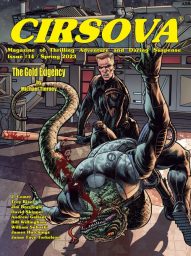 disappoint. It’s full of wonderfully weird stories. Please be aware that there are some very minor spoilers in the reviews that follow. The Unshrouded Stars – David Skinner I didn’t think I was going to like “The Unshrouded Stars,” it being a combination of sorcerous fantasy and hard science, which I like only in moderation. It took me a couple of pages to get into it.
disappoint. It’s full of wonderfully weird stories. Please be aware that there are some very minor spoilers in the reviews that follow. The Unshrouded Stars – David Skinner I didn’t think I was going to like “The Unshrouded Stars,” it being a combination of sorcerous fantasy and hard science, which I like only in moderation. It took me a couple of pages to get into it.
Tolkien (Tolkien Untangled): The most iconic dragon of them all… But where did he come from?
 Fantasy Art (Goodman Games): The decade of fantasy publishing kicked off by the runaway success of the The Lord of the Rings produced not only a flurry of reprints of classic fantasy, but also an entire crop of creative, iconic, and visionary cover designs. Ballantine Books launched its iconic Ballantine Adult Fantasy line on the strength of the fantasy boom, featuring cover art as wonderous as the contents of the books themselves. We’ve gathered together some of our favorite covers below to share with you. Enjoy!
Fantasy Art (Goodman Games): The decade of fantasy publishing kicked off by the runaway success of the The Lord of the Rings produced not only a flurry of reprints of classic fantasy, but also an entire crop of creative, iconic, and visionary cover designs. Ballantine Books launched its iconic Ballantine Adult Fantasy line on the strength of the fantasy boom, featuring cover art as wonderous as the contents of the books themselves. We’ve gathered together some of our favorite covers below to share with you. Enjoy!
Authors (DMR Books): How much do your audience’s expectations factor in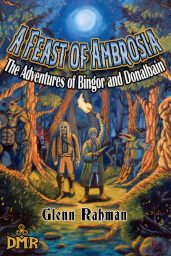 to what you write? Does this ever cause you to hold back from experimenting?
to what you write? Does this ever cause you to hold back from experimenting?
My audience’s expectations are totally a mystery to me. The only part of the audience that I can competently address is the small part representing weird fiction aficionados. I go after that market share because they like to read that type of work.
RPG (Grumpy Wizard): The magic user is my favorite character class in classic fantasy gaming. A lot of people don’t like playing magic users because they are perceived to be not fun to play at low levels. The wizard is challenging to play but if you can keep the character alive long enough, they become a potent force in the campaign.
Science Fiction (SFF Remembrance): Henry Kuttner began writing pretty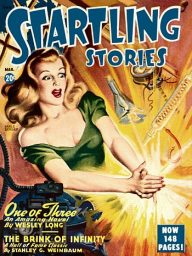 young, being first published in either 1931 or 1936 (ISFDB claims the former, but something tells me they’re wrong), the latter at the very least introducing Kuttner under his own name to the world of SFF with “The Graveyard Rats.” Said story, a pretty solid one-man show about rats and claustrophobia, has been very recently adapted into an episode of Guillermo del Toro’s Cabinet of Curiosities. Kuttner would come to define himself, though, not as a practitioner of horror, but of humor, though the two are not always mutually exclusive.
young, being first published in either 1931 or 1936 (ISFDB claims the former, but something tells me they’re wrong), the latter at the very least introducing Kuttner under his own name to the world of SFF with “The Graveyard Rats.” Said story, a pretty solid one-man show about rats and claustrophobia, has been very recently adapted into an episode of Guillermo del Toro’s Cabinet of Curiosities. Kuttner would come to define himself, though, not as a practitioner of horror, but of humor, though the two are not always mutually exclusive.
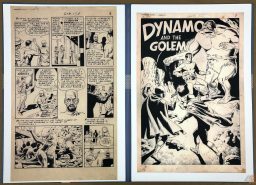 Art (AE Index): Wally Wood is recognized as one of the finest talents to ever grace the comics medium. In the 1950s, he was one of the brightest stars in the legendary EC stable of artists, including being one of the key artists on the ground breaking MAD! In the 1960s, Wood reinvigorated Marvel’s Daredevil, including designing the classic costume. Soon after Wood turned his sites on a new superhero venture—the T.H.U.N.D.E.R. Agents! Wood co-created the team, including the iconic Dynamo! Now IDW proudly presents a selection of gorgeous Wood art, all scanned from the originals and printed at full size. Wood’s art is increasingly rare and sought after by collectors, few have even seen his originals—don’t miss this opportunity to own the next best thing, and at a fraction of the cost!
Art (AE Index): Wally Wood is recognized as one of the finest talents to ever grace the comics medium. In the 1950s, he was one of the brightest stars in the legendary EC stable of artists, including being one of the key artists on the ground breaking MAD! In the 1960s, Wood reinvigorated Marvel’s Daredevil, including designing the classic costume. Soon after Wood turned his sites on a new superhero venture—the T.H.U.N.D.E.R. Agents! Wood co-created the team, including the iconic Dynamo! Now IDW proudly presents a selection of gorgeous Wood art, all scanned from the originals and printed at full size. Wood’s art is increasingly rare and sought after by collectors, few have even seen his originals—don’t miss this opportunity to own the next best thing, and at a fraction of the cost!
Pulp (The Obelisk): Multiple issues of Weird Tales that are free to read. You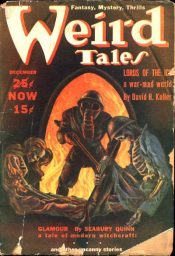 can enjoy the May 1924 issue featuring H.P. Lovecraft’s ghost-written story, “Imprisoned with the Pharaohs” with its original artwork. Or you can pour over the June 1928 issue featuring Lovecraft’s “The Lurking Fear,” a Jules de Grandin mystery tale, and poems by Donald Wandrei and Manly Wade Wellman. Other standouts include the June 1933 issue featuring a cover story by Robert E. Howard, and the December 1939 issue that contains a great yarn by David H. Keller, one of “Big” Dave Martel’s favorite pulp writers.
can enjoy the May 1924 issue featuring H.P. Lovecraft’s ghost-written story, “Imprisoned with the Pharaohs” with its original artwork. Or you can pour over the June 1928 issue featuring Lovecraft’s “The Lurking Fear,” a Jules de Grandin mystery tale, and poems by Donald Wandrei and Manly Wade Wellman. Other standouts include the June 1933 issue featuring a cover story by Robert E. Howard, and the December 1939 issue that contains a great yarn by David H. Keller, one of “Big” Dave Martel’s favorite pulp writers.
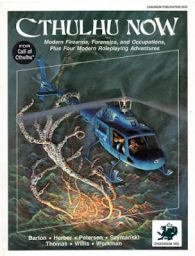 RPG (Grognardia): Since its original release in 1981, Call of Cthulhu’s default setting has been the 1920s. As a result, the venerable horror roleplaying game is inextricably linked to the Jazz Age in the minds of most gamers. This linkage is, however, a mere accident of history, a consequence of the fact that most of H.P. Lovecraft’s tales, including the eponymous “The Call of Cthulhu,” were written and published during that decade.
RPG (Grognardia): Since its original release in 1981, Call of Cthulhu’s default setting has been the 1920s. As a result, the venerable horror roleplaying game is inextricably linked to the Jazz Age in the minds of most gamers. This linkage is, however, a mere accident of history, a consequence of the fact that most of H.P. Lovecraft’s tales, including the eponymous “The Call of Cthulhu,” were written and published during that decade.
Weird Westerns (Pulp Super Fan): I like occult detectives and always like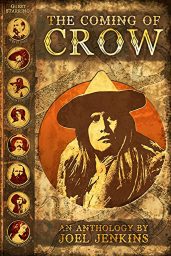 finding out about new ones. A unique one I recenty discovered is Joel Jenkins‘ Lone Crow. Lone Crow is a Native Amerian shaman and gunfighter, set in the Old West, though some of his stories take him to other locations. At this point there are four volumes of stories from PulpWork Press: three collections and a novel. I picked up the first volume, The Coming of Crow.
finding out about new ones. A unique one I recenty discovered is Joel Jenkins‘ Lone Crow. Lone Crow is a Native Amerian shaman and gunfighter, set in the Old West, though some of his stories take him to other locations. At this point there are four volumes of stories from PulpWork Press: three collections and a novel. I picked up the first volume, The Coming of Crow.
 Cinema (Neotext Corp): Filmmaker Michael Cimino garnered both fame and acclaim thanks to his 1978 Academy Award-winning war movie The Deer Hunter, only to fall from grace because of his follow-up, the 1980 Western Heaven’s Gate that failed at the box office, and did so miserably. With Year of the Dragon (1985), Cimino got the chance to set the record straight, and even though the neo-noir crime thriller was not all that financially profitable, it would go on to gain a cult following in the years to come, becoming one of the most important action films of the 1980s.
Cinema (Neotext Corp): Filmmaker Michael Cimino garnered both fame and acclaim thanks to his 1978 Academy Award-winning war movie The Deer Hunter, only to fall from grace because of his follow-up, the 1980 Western Heaven’s Gate that failed at the box office, and did so miserably. With Year of the Dragon (1985), Cimino got the chance to set the record straight, and even though the neo-noir crime thriller was not all that financially profitable, it would go on to gain a cult following in the years to come, becoming one of the most important action films of the 1980s.
Cinema (Collection Reviewed): We watched both of these last year, so skipped this time around. We’re keeping both, as each is a solid movie, flaws and all, about a pivotal point in American history. They could both be more accurate about the root causes of the war – slavery as much as Santana’s centralizing dictatorship – but there’s no getting around the brutal, heroic stand of the Texican defenders. Wayne’s is the lesser of the two – it’s more sentimental and rose-tineted
skipped this time around. We’re keeping both, as each is a solid movie, flaws and all, about a pivotal point in American history. They could both be more accurate about the root causes of the war – slavery as much as Santana’s centralizing dictatorship – but there’s no getting around the brutal, heroic stand of the Texican defenders. Wayne’s is the lesser of the two – it’s more sentimental and rose-tineted
 Crime Fiction (M Porcius): Back in late June of 2022 I bought a stack of Mickey Spillane paperbacks at clearance prices at Wonder Book in Frederick, MD. Let’s read one of them, The Last Cop Out, which debuted in hardcover in 1973 when I was less than two years old. My paperback edition of The Last Cop Out is 190 pages of pretty small type (the hardcover, which you can read at the internet archive, is 300 pages).
Crime Fiction (M Porcius): Back in late June of 2022 I bought a stack of Mickey Spillane paperbacks at clearance prices at Wonder Book in Frederick, MD. Let’s read one of them, The Last Cop Out, which debuted in hardcover in 1973 when I was less than two years old. My paperback edition of The Last Cop Out is 190 pages of pretty small type (the hardcover, which you can read at the internet archive, is 300 pages).
History (Marzaat): McMeekin has argued elsewhere that World War One could rightly be thought of as the War of the Ottoman Succession, a war that lasted from 1909 to 1923. You could even argue, as McMeekin does in his concluding chapter on the pros and cons of Ottoman administration and what happened when it ended, that that war is still going on in the Middle East.
could rightly be thought of as the War of the Ottoman Succession, a war that lasted from 1909 to 1923. You could even argue, as McMeekin does in his concluding chapter on the pros and cons of Ottoman administration and what happened when it ended, that that war is still going on in the Middle East.
 Firearms (Spec-Ops): The SIG MCX is a popular family of firearms manufactured by SIG Sauer, available in the selective fire and semi-automatic models. The MCX features a short-stroke gas piston system derived from the SIG MPX submachine gun. The rifle is designed to deliver optimal performance, reliability, and versatility. It is available in rifle, carbine, short-barreled rifle, and pistol configurations, making it an excellent option for various applications. This article will explore the features, history, and applications of the SIG MCX.
Firearms (Spec-Ops): The SIG MCX is a popular family of firearms manufactured by SIG Sauer, available in the selective fire and semi-automatic models. The MCX features a short-stroke gas piston system derived from the SIG MPX submachine gun. The rifle is designed to deliver optimal performance, reliability, and versatility. It is available in rifle, carbine, short-barreled rifle, and pistol configurations, making it an excellent option for various applications. This article will explore the features, history, and applications of the SIG MCX.
Too bad the blogger at Paperback Warrior does not understand the difference between martial law and anarchy.